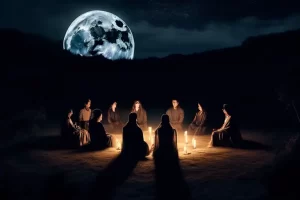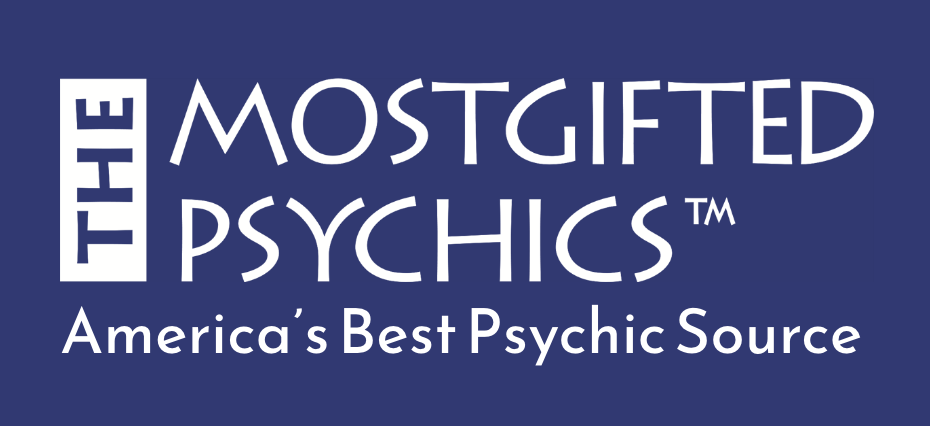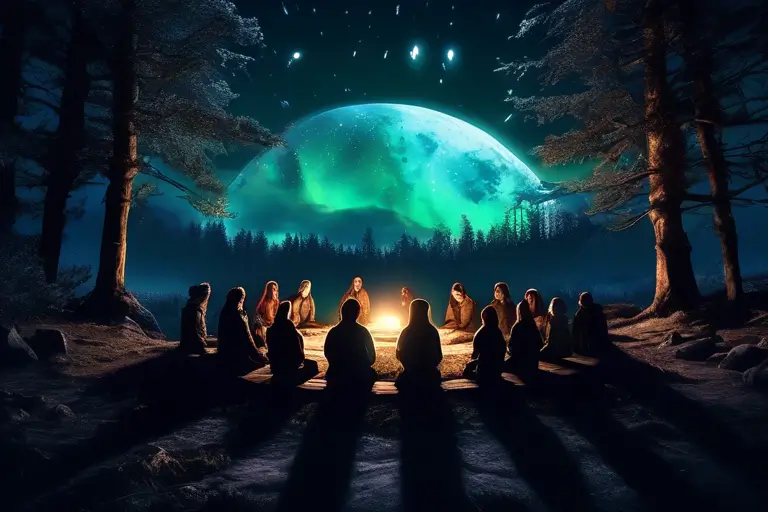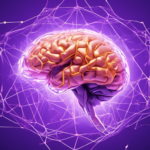 Mediumship
Mediumship
Communication With The Dead Explored
Introduction
In a world filled with mysteries, the concept of mediumship has long captivated the minds of those seeking a connection with the spirit world. Mediums, individuals who claim to communicate with the deceased, have been the subject of fascination and skepticism alike. While some dismiss mediumship as mere charlatanism, others believe it to be a genuine means of bridging the gap between the living and the dead. In this article, we will explore the science behind mediumship, examining the research, anecdotes, and historical figures that lend credence to this phenomenon.
What is Mediumship?
Mediumship is the practice of purportedly communicating with spirits, often with the intention of relaying messages from the deceased to the living. Mediums, who possess this unique ability, claim to receive information through various sensory channels, such as hearing, seeing, or feeling the presence of spirits. The phenomenon of mediumship has been observed in cultures throughout history, with accounts dating back centuries. While the specific methods and practices may vary, the underlying concept remains consistent: the belief that the spirits of the dead can interact with the living.
The Historical Significance of Mediumship
Throughout history, numerous accounts of mediumship have emerged, leaving an indelible mark on society. One of the most famous cases is that of the Fox sisters, who gained prominence in the mid-19th century. The sisters, Margaret and Kate Fox, claimed to communicate with spirits through a series of mysterious knocks and rappings. Their demonstrations of mediumship captivated audiences and sparked a widespread interest in the supernatural.
Another prominent figure in the history of mediumship is Allan Kardec. Kardec was a French educator and author who lived in the early 1800s who was a pioneer in what today is called parapsychology. During his life, he played a pivotal role in the development of Spiritism during Victorian times. Kardec’s works, including “The Spirits’ Book” and “The Mediums’ Book,” laid the foundation for the modern practice of mediumship. He sought to provide a scientific framework for understanding the spirit world and its connection to the living. His work was instrumental in laying the foundations for mediumship as we know it today.
Studying Mediumship: Research and Certification
Academic research into mediumship has been conducted for over a century, with psychologists and scientists seeking to unravel the mysteries behind this phenomenon. These studies have employed rigorous methodologies to examine the claims made by mediums. One such approach is the use of proxy readings, where a medium communicates with spirits on behalf of a person who is not present. This method aims to minimize the potential influence of cold readings or prior knowledge on the part of the medium.
In recent years, organizations such as the Forever Family Foundation and the Windbridge Research Center have emerged to certify mediums under controlled conditions. These organizations employ science-based examination methods to ensure that mediums can provide information without resorting to deceptive or fraudulent means. While the field of mediumship certification is not regulated by the state, these external sources aim to uphold standards and vet practitioners.
Understanding Mediumship Experiences
Mediums often report unique auditory experiences, hearing the voices of the deceased as they seek to communicate with the living. But what can these voices reveal about the spirit world? It is important to approach these experiences with an open mind and consider the potential insights they may offer.
According to researchers at Durham University, mediums who claim to hear the dead may have a history of unusual auditory experiences. These individuals are more likely to experience absorption, a state of heightened attention and focus that is linked to altered states of consciousness. It is through this absorption that mediums may be able to receive messages from the spirit realm.
Mediumship and the Spirit World: Anecdotes and Evidence
Anecdotal evidence plays a significant role in shaping our understanding of mediumship. Countless individuals have shared stories of encounters with mediums, recounting experiences that defy conventional explanation. While these anecdotes may not provide definitive proof of the spirit world, they offer glimpses into the potential power of mediumship.
One such anecdote involves a woman attending a spiritualist church where mediums connect with departed spirits. During a reading, the medium accurately described the cause of death for two of the woman’s friends, providing specific details that were unknown to the medium beforehand. These instances of accurate information provide a compelling argument for the authenticity of mediumship.
Mediumship and Trustworthiness: Separating Fact from Fiction
Critics of mediumship often raise questions about the trustworthiness of the information relayed by mediums. Skeptics argue that mediums could be engaging in cold reading techniques or simply making educated guesses. While it is essential to approach any claim with a critical mindset, it is equally important to consider the evidence and personal experiences that lend credence to mediumship.
In some instances, mediums have provided information that could not have been known to them through conventional means. This information, known as “evidential matter,” serves as a validation of the medium’s connection with the spirit world. However, it is crucial to exercise discernment and evaluate each medium’s claims on an individual basis.
Mediumship and Demons: Debunking Misconceptions
Misconceptions surrounding mediumship often include unfounded claims of demonic influence. While some religious beliefs may associate mediumship with negative forces, it is important to approach the subject with an open and balanced perspective. Mediumship, as studied by scientists and researchers, focuses on the potential communication between the living and the dead, rather than invoking dark entities.
By understanding the scientific research and personal experiences related to mediumship, we can dispel misconceptions and engage in informed discussions about the phenomena associated with the spirit world.
Technological Spirit Communication
The concept of life after death and the possibility of communicating with the departed has intrigued humanity for centuries. From traditional séances to modern ghost hunting, the pursuit of reaching beyond the veil has evolved alongside technology. This article delves into the intriguing attempts of inventors to build devices for communicating with the dead, the motivations behind these inventions, and how modern spiritualists are harnessing Artificial Intelligence (AI) to bridge the gap between the living and the deceased.
The Historic Quest: Edison and Tesla
The history of paranormal communication is filled with fascinating stories of inventors and their ambitious pursuits. Two figures that stand out in this narrative are Thomas Edison and Nikola Tesla, whose rivalry fueled their individual attempts to build a so-called “spirit phone”.
Edison’s Ambitious Endeavor
Renowned for his inventions like the phonograph and the motion picture camera, Thomas Edison harbored an audacious plan towards the end of his career. His idea was to create a “spirit phone” that could facilitate communication with the dead. This endeavor was not merely for scientific advancement or fame, but also a personal attempt to outdo his long-time rival Nikola Tesla.
Tesla’s Electrifying Experiments
Tesla, an accomplished inventor himself, had a different approach to probing the paranormal. He considered the possibility of contacting spirits while experimenting with a crystal radio. He believed that the eerie signals he intercepted were either a form of extraterrestrial communication or an echo from the afterlife. However, he remained cautious and sought more simple explanations for these phenomena.
The Modern Ghost Hunters: Tools, Technologies & Electronic Mediumship
In the contemporary era, ghost hunters and paranormal investigators have a plethora of technological tools at their disposal. These devices range from Electromagnetic Field (EMF) Detectors to Motion Detectors/Receivers, and from Infrared Cameras to specialized devices like E-Field Pods and Paranormal Pucks. These tools help investigators capture and analyze potential paranormal activities, lending a scientific approach to their pursuits.
Some ambitious ghost hunters and spiritualists have gone many steps further than mere detectors and have showcased a connection between detection and communication. This has lent some credence to mediumship in the modern era – or at least given it a boost.
The Intersection of Technology and Mediumship
The development of technology for paranormal communication marks a significant shift from traditional mediumship. While mediums relied on their psychic abilities to communicate with spirits, modern investigators employ technology to detect and document potential paranormal activities. This transition reflects a broader trend towards evidence-based practices in the field.
Electronic Voice Phenomena: Voices from the Beyond?
One intriguing aspect of paranormal investigation is the Electronic Voice Phenomena (EVP). It refers to the mysterious voices or sounds that are captured in audio recordings but weren’t audible at the time of recording. Some researchers believe these voices could be communications from the spirit world. However, skeptics argue that these could be random noise interpreted as voices, a psychological phenomenon known as pareidolia.
AI and the Future of Paranormal Communication
The advent of Artificial Intelligence (AI) has opened up new possibilities in the realm of paranormal communication. Startups are now leveraging AI to create digital avatars of deceased individuals. These avatars, built using data like photos, messages, and recordings, can mimic the language, voice, and movements of the deceased, providing a semblance of communication with the departed.
Conclusion
From the ambitious pursuits of renowned inventors to the innovative applications of AI, the journey towards communicating with the dead is a captivating tale of human curiosity, scientific innovation, and the timeless quest for understanding life beyond death. As technology continues to evolve, so does our understanding of the afterlife. While the final word on this subject is yet to be written, the exploration of the unknown will continue to captivate us, pushing the boundaries of our knowledge and belief.
In conclusion, mediumship remains a subject of fascination and debate. Through the lens of scientific research, historical accounts, and personal anecdotes, we can begin to understand the complexities of this phenomenon. While skepticism may persist, it is important to approach mediumship with an open mind, considering the potential insights it offers into the spirit world.
As we continue to explore the science behind mediumship, it is crucial to remain curious and discerning. By examining the evidence and engaging in respectful dialogue, we can further our understanding of this enigmatic aspect of human experience. Whether one believes in the authenticity of mediumship or remains skeptical, the exploration of the spirit world through the lens of science is a fascinating journey that invites us to question our perceptions of reality.




